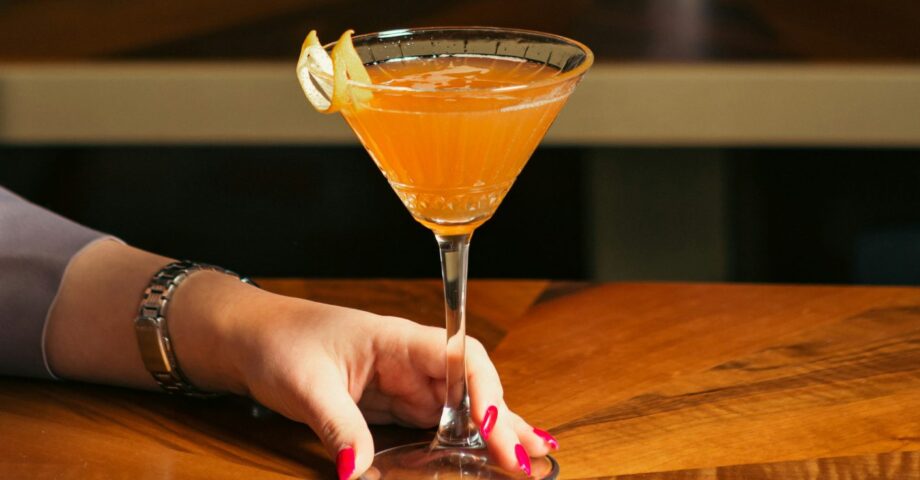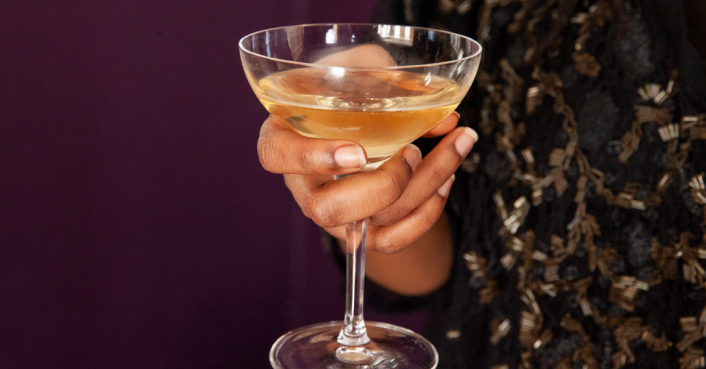Last Updated on April 23, 2025
If you’ve been trying to cut back on drinking but still find yourself pouring that glass of wine after a long day at work (and then regretting it later), you’re not alone. That inner tension—Why did I do that when I told myself I wouldn’t?—is a totally understandable experience, especially when you’re working towards a challenging goal. It’s called cognitive dissonance.
Cognitive dissonance tends to happen when your actions do not match up with your values or goals. It can feel really disheartening, but it’s not all bad. In many instances, it’s actually a sign that something is shifting in the way you view your life. You’re starting to question old patterns. Change is on the way.
Watch The Related Podcast
Cognitive Dissonance in Action
Here’s one way in which cognitive dissonance might show up. Let’s say you really value feeling energized and present during the day. (Who doesn’t, right?) But you also associate alcohol with unwinding in the evening, which can be pleasant, something to look forward to. When those two inclinations clash, your brain tries to resolve the tension, often by taking the path of least resistance.
In many cases, that looks like justifying the drink. Sound familiar?
The truth is that even if you experience cognitive dissonance, even if you take a non-ideal path in the wake of that feeling, it doesn’t mean that you’re failing. It’s a sign that you care. It means you’re starting to hold up your current actions against your deeper values—and that inner conflict is a signal that your values are poised to win.
Cognitive Dissonance and Mindful Drinking
Rethinking alcohol use can bring up a lot of complex emotions, especially if drinking has historically been a part of how you socialize, relax, or reward yourself. Cognitive dissonance tends to peak when you’re actively trying to make a change in your life, because your old routines and new intentions are battling against each other.
You might notice it in moments like:
- Saying you’re taking a break, then accepting a drink at a party to avoid standing out.
- Telling yourself you’ll only drink on weekends, but justifying a mid-week glass because “it was a tough day.”
- Deciding not to track your drinks anymore because “you’ve got it under control.”
None of these examples means you’re not serious about your goals. They just mean you’re human. The real question is: What can you do with that discomfort?
Strategies to Work Through Cognitive Dissonance
It’s helpful to think of cognitive dissonance as an opportunity, not a roadblock. Here are a few practical strategies to help you work through the tension.
1. ID the Tension
Awareness is step one. Instead of ignoring that tug-of-war feeling, pause and call it what it is: “This is cognitive dissonance. My actions and my goals are out of sync right now.” Naming it helps you break free from autopilot and re-engage with intention.
2. Reconnect with Your “Why”
When your motivation starts to blur, go back to the heart of it. Why did you want to drink less in the first place? Maybe it’s about getting better sleep. Maybe it’s about being more present with your kids before school. Maybe it’s about feeling more stable. Whatever your reasons, reconnecting with them helps cut through the noise in challenging moments.
3. Reframe the Moment
Instead of focusing on what you’re giving up, focus on what you’re choosing to add to your life. Sure, FOMO can be powerful, but you’re not really “missing out” by saying no to a drink. You’re choosing to feel better the next day and keep a promise to yourself. That’s a real reward.
4. Make a Plan for Sticky Situations
One way to reduce cognitive dissonance is by planning. That means more than deciding which days you’ll drink or not drink—it also means thinking about context. Is there a happy hour coming up? A family dinner where alcohol usually flows? Ahead of time, make a plan for how you want to handle it. Bring your favorite soda. Set a limit on how many drinks you’ll consume. That way, if things start to feel uncomfortable, you’ll already have a plan in place.
5. Get into New Habits
If you tend to reach for a drink out of routine, try replacing that habit with something that meets the same need. Maybe it’s a flavored seltzer, a walk, or listening to an album that helps you unwind. The more you seek out and practice alternative coping tools, the less heft those old patterns will have over time.
6. Cut Yourself Some Slack
Perfection is not the goal here—progress is. Slipping up doesn’t mean you’re back at square one. It means you’re learning. The key is to respond with curiosity instead of shame. What triggered the decision? What can you try differently next time? This is where real growth happens.
A Quick Exercise to Align Actions with Priorities
Want to get even clearer on where your dissonance might be coming from? Try this:
- List your top three reasons for drinking less (e.g., better energy, being more present, saving money).
- For each reason, write down a recent situation where your behavior didn’t align.
- Brainstorm one action you can take this week to move closer to your values in each area.
This exercise doesn’t have to feel high-stakes or dramatic. Even minor adjustments, like choosing a mocktail at dinner, can make a big difference.
Need support as you navigate this process? Tools like daily drink planning, progress tracking, and accountability check-ins can help quiet the dissonance and keep you grounded in your goals. Start where you are with a 15-day free trial of Sunnyside.





